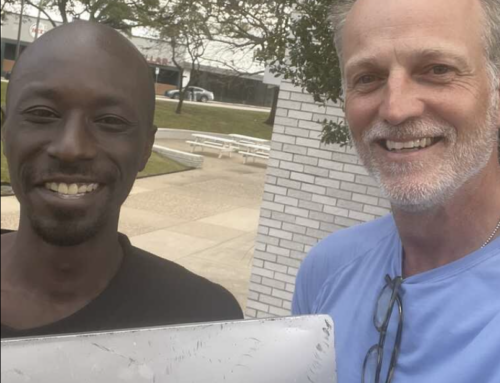Pick up a newspaper, turn on the television, log on to website, and the story is always the same — crime. Or, as it seems these days, CRIME!!
Armed robberies on Greenville Avenue. National surveys ranking Dallas one of the deadliest cities in the country. A police department in turmoil. Can armed townsfolk patrolling the streets, shotguns at the ready, women and children cowering behind closed doors, be far behind?
So it would appear. But appearances, and especially appearances about crime, can be deceiving. This current outbreak has as much to do with politics and TV programming consultants as it has to do with muggings and grand theft auto. This is not to say that crime doesn’t exist, and I’m certainly not discounting the pain and suffering that crime causes.
But the truth — the hard, factual, here-are-the-numbers truth — is that our neighborhood is safer than it was two years ago, and much safer than it was in the bad old days in the mid-1990s, when the Advocate ran crime statistics every month, and Lunch with the Cops was one of our best-read features.
Consider just a couple of statistics from the Dallas Police Department’s Web site, dallaspolice.net (which anyone with a computer and modem can see for themselves). In the five reporting areas that include Greenville Avenue between McCommas and Ross, total crime is down from both 2001 and 2002. There’s a hitch up between 2002 and 2003 in a couple of them, but nothing spectacular. And armed robberies are down in three of the five areas (which would be four except that the section that includes Greenville between Belmont and Vickery didn’t have any armed robberies at all in 2002).
Which raises the question: Why. Why the hype, and why now? There are several reasons.
• The Pampers theory. An old pal of mine from the newspaper business says you can always tell when reporters have children. That’s when newspapers and TV stations start doing stories about the high cost of disposable diapers. His point: It’s not news until it affects you personally, and that may be one of the forces at play here. It’s likely that many of the people who have moved down here in the past several years are reporters and producers who are living in urban neighborhoods for the first time. Which means they’re experiencing urban crime for the first time. So it’s news to them.
• If it bleeds, it leads. This is where the TV consultants fit in. Local news these days is about crime and violence, because the consultants have convinced station executives that crime and violence deliver ratings. That’s why we see video of fires, stand-ups in front of auto accidents and the like. It’s why a two-bit fire in a Greenville Avenue restaurant gets on the news for three days in a row. That the biggest story in this neighborhood is the rise in real estate values has gone all but unreported in the mainstream media.
• City Hall fun and games. We have an ex-police chief, a search committee looking for a police chief, a mayor who wants to be police chief, a fake drugs scandal, and cops beating up their wives. About the only thing we don’t have is Al Pacino playing Serpico. Given all this, what cop is going to be brave enough to say: “Hey, wait a minute. Let’s look at what’s really going on and figure out what to do”? Most of the police brass is probably too busy ducking and covering to do anything more than nod in agreement and scramble back under their desks.
Crime, say the experts, is a function of population density. The more people crammed into an area, the more crime. The only way around that is to hire more cops. So that the eighth-largest city in the country is the fifth most deadly is not surprising. And, since we don’t want to pay taxes to hire more cops (New York City’s dramatic decrease in crime in the 1990s had more to do with increasing the number of cops by one-third than it did with consultants and political posturing), we’re going to have urban levels of crime.
And that should be the real headline.




